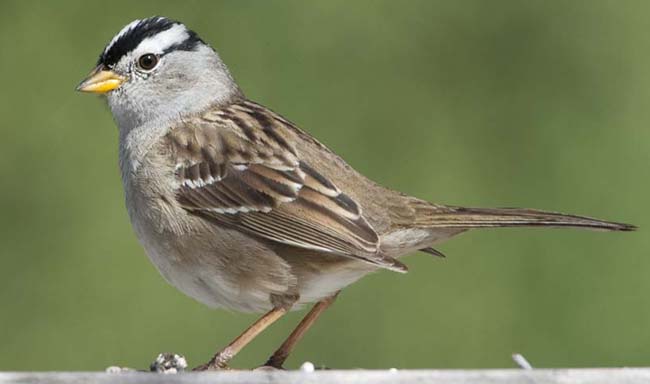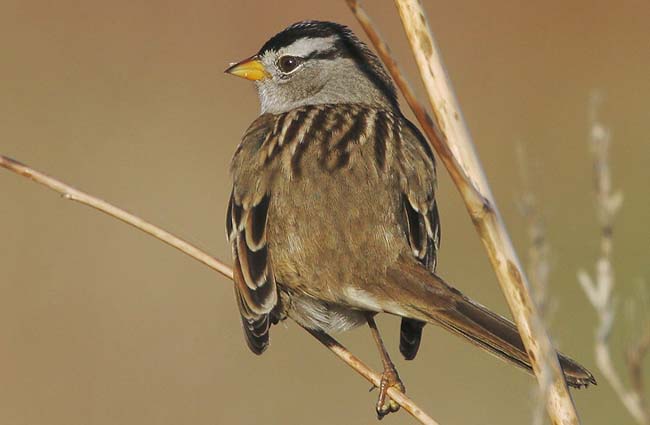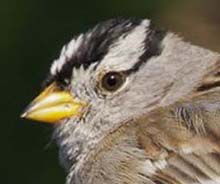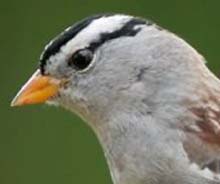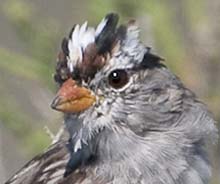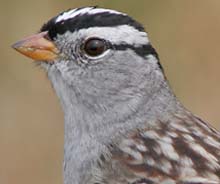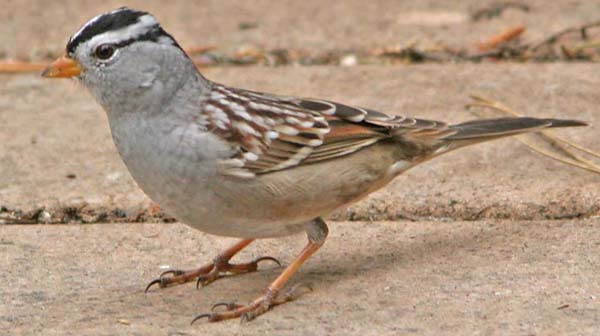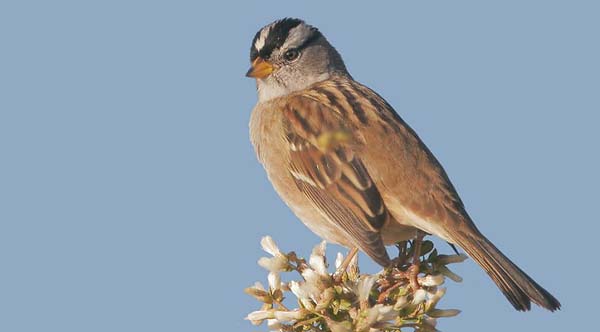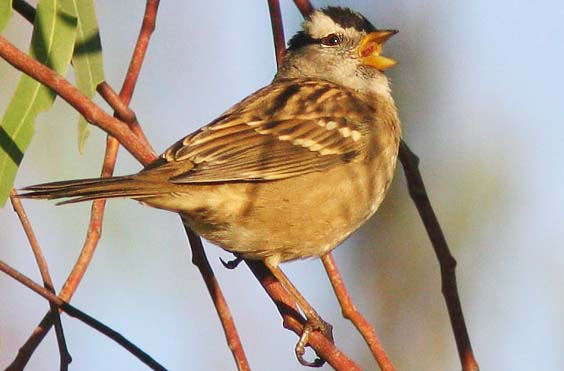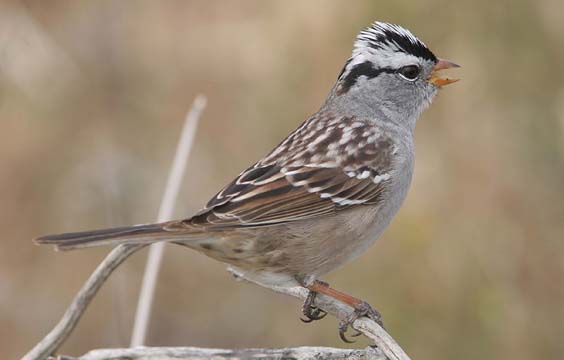Zonotrichia leucophrys pugetensis & Z. l. gambelii
a web page by Don Roberson |
Puget Sound and Gambel's White-crowneds are widespread migrant and wintering birds in coastal central California. With good views or photos, and an understanding on how to identify our resident Nuttall's White-crowned, a good many of the adults can be identified in the field. As both Puget Sound and Gambel's are migratory, they have longer wings than Nuttall's, and thus show a longer primary projection. |
|
||||||||||||
Both adults have black-and-white crown stripes; there is almost never any brownish in the black stripes as is common in first-summer Nuttall's (Pyle 1997; a few pugetensis in their first-summer may have a little brown at the nape) Both adults in these photos lack a malar stripe. Some pugetensis adults may have a malar stripe, but it is quite rare for an adult gambelii to have that character. The above two photos were both taken in early spring. Let's compare these two subspecies in the fall (below). |
||||||||||||
|
||||||||||||
| There is not a whole lot of difference between spring and fall, except that perhaps the bills average brighter in spring. Back pattern and the color of the inner greater coverts seems to work equally well in either season, as does the general tone of the gray underparts. Bill color, though, can be problematic. While pugetensis tends to look "yellow" and gambelii tends to look orange, there are some birds that seem intermediate. The following gallery compares bill color in spring, when color tone is the brightest. | ||||||||||||
|
||||||||||||
The top row above shows all pugetensis; the second row shows all gambelii. There is some within subspecies variation, but I think it is apparent that the top row (Puget Sound) is a yellow color, with some orange overtones (especially in early morning light, as to top right bird), while the bottom row (Gambel's) are an orange color, with some pink overtones, and especially on the upper mandible. Further, note that most pugetensis show a fair bit of dark on the culmen, while most gambelii had just a small dark tip. Yet there are exceptions in all cases. Back color and the overall tone of gray on the underparts, though, really help separate these subspecies: |
||||||||||||
|
||||||||||||
Distribution and timing can be of some help. In migration, mostly late September through October in the fall, and March-April in spring, either of these subspecies can occur anywhere. In the fall, both subspecies begin to arrive about mid-September in MTY, so there is little different in timing. In the spring, however, wintering Puget Sound begin departing by late February and many have left by mid-March, while the bulk of Gambel's migration is later, during April and sometimes into May. In winter, however, it is fair to say that Puget Sound White-crowns primarily winter near the coast, while Gambel's winters primarily inland. In the San Francisco Bay area, where White-crowned Sparrow is abundant in winter, only 1% of the flocks were gambelii. The rest were pugetensis (Baptista et al. 1997), except for the narrow zone where resident nuttalli occur. There can be mixed flocks, but my impression is that this is much more common in migration than in winter. Here in Monterey County, pugetensis are very common as the wintering White-crowns at oft-birded spots such as Moonglow Dairy and Moss Landing (except that nuttalli is the common race along Jetty Road and in the coastal dunes), Salinas River mouth (except for nuttalli in the dunes), Carmel River mouth (except for nuttalli in the coastal scrub by the cross), and Big Sur R. mouth (except for nuttalli in the coastal scrub on the headlands). In contrast, if you bird inland in Monterey County in winter, such as the upper Salinas Valley or east, gambelii is the common wintering White-crowned. |
||||||||||||
|
||||||||||||
